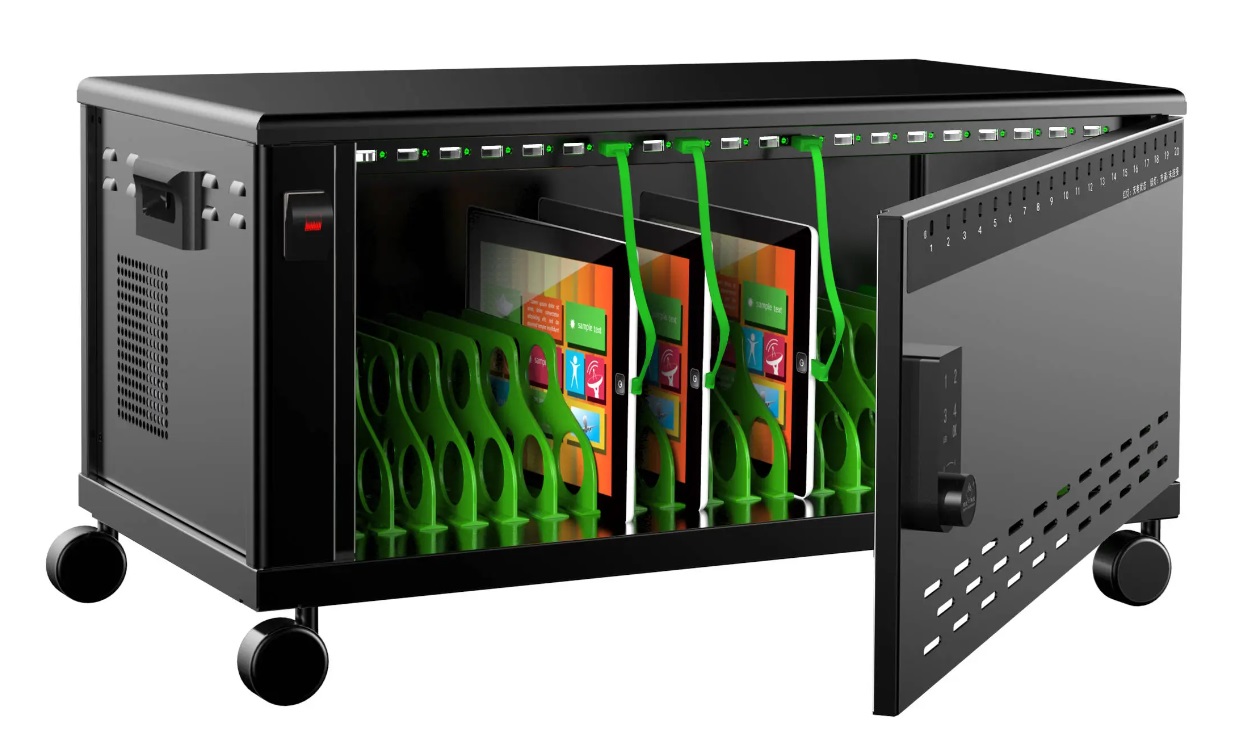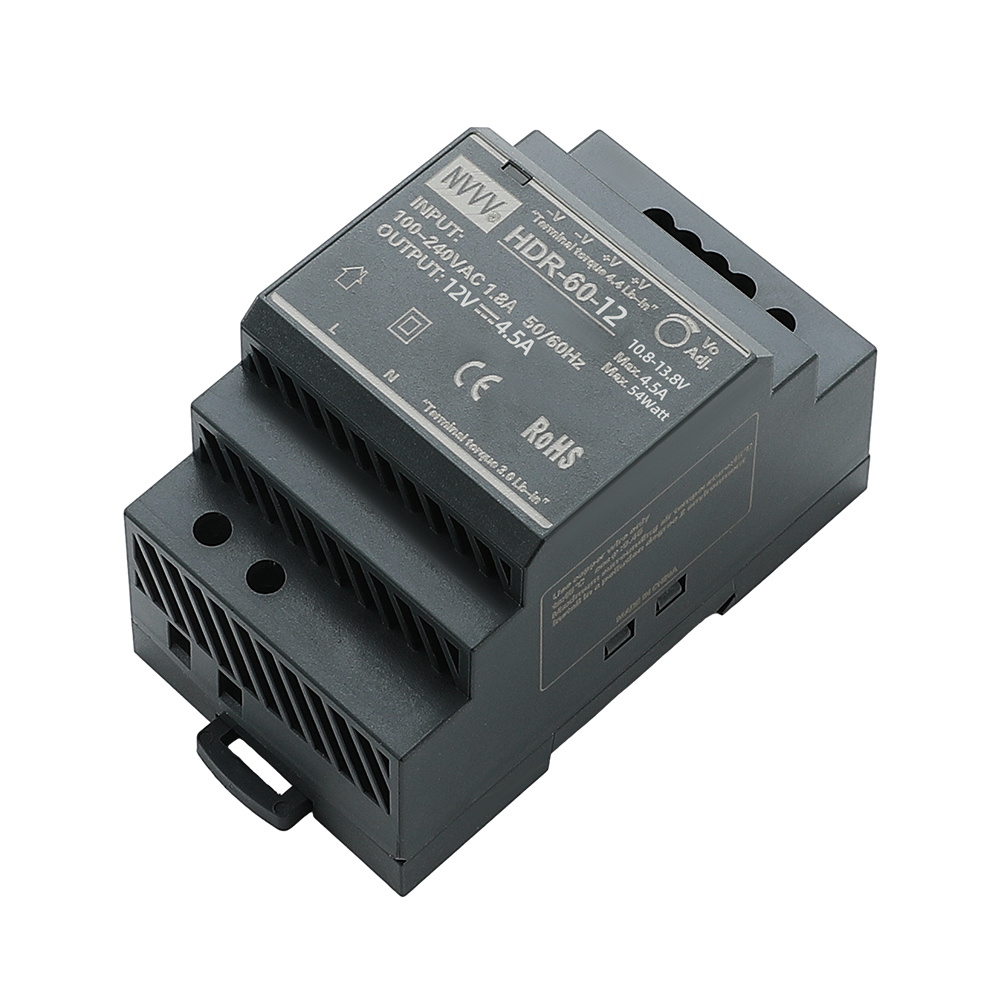What are the applications of SMPS and what is its internal structure?
As an efficient and stable power supply technology, the switching power supply (SMPS) is widely used in many fields. With its advantages of high energy efficiency, light weight and stable output, it has become an indispensable power supply solution in modern electronic devices. So, in what scenarios is SMPS specifically used? How does its internal structure achieve such excellent performance? This article will answer these questions through detailed analysis to help you better understand SMPS.
1. What are the application scenarios of switching power supplies?
Switching power supplies are becoming more and more widely used in various industries due to their high efficiency, stability and versatility. From industrial control to household appliances, from communication equipment to precision instruments, SMPS is almost everywhere. Here are several typical application scenarios:
School network laptop charging cabinet
With the advancement of digital education, more and more schools are equipped with network laptop charging cabinets to provide students with centralized management and charging services. In this application scenario, switching mode power supply plays a key role. Since the charging cabinet usually needs to power dozens or even hundreds of laptops at the same time, an efficient, stable and safe power management system is required. SMPS can provide constant output voltage and current according to the needs of the device, avoiding uneven charging or device damage caused by voltage fluctuations.
In these charging cabinets, 24vdc power supply is a common configuration because it can provide stable DC power output for multiple devices, ensuring that each laptop can be fully charged quickly and safely. In addition, the SMPS in the charging cabinet also has overload protection, short circuit protection and over-temperature protection functions to ensure the safety and reliability of the entire system. When multiple devices are charged at the same time, SMPS can maintain stable power output while reducing energy consumption, which is particularly important for high-frequency usage scenarios such as schools.
3D Printers
3D printers are another area where SMPS is widely used. 3D printers require precise control of the working status of motors and heating elements, and these components have extremely high requirements for power supply stability. SMPS provides constant DC power in 3D printers to ensure the accuracy and consistency of the printing process.
During the printing process, SMPS can automatically adjust the output voltage and current according to the changes in the load to avoid printing errors or equipment failures caused by unstable power supply. Especially when printing for a long time and at high power, the high efficiency and stability of SMPS ensure that the equipment can continue to operate without overheating or insufficient power. In such equipment, 24 volt dc power supply is a common choice, which can provide stable power supply for key components in the printer to avoid voltage fluctuations affecting printing quality.
Industrial control and automation
In the field of industrial control and automation, SMPS is widely used in PLC (programmable logic controller), sensors, relays and other control devices. Industrial environments usually have extremely high requirements for the reliability of power supply. Any voltage fluctuation or unstable power supply may cause equipment failure, which in turn affects the normal operation of the production line.
SMPS can maintain efficient operation in various complex industrial environments with its wide input voltage range, strong anti-interference ability and stable output. Whether it is high temperature, low temperature, humidity or high dust environment, SMPS can provide stable power support. In addition, SMPS also has good anti-electromagnetic interference performance, which is particularly important in industrial sites with frequent electromagnetic interference.
Embroidery machine
Embroidery machine is a key equipment in the textile industry, and SMPS plays a particularly important role in it. Embroidery machines require precise control of the operation of motors and the execution of needlework. Instability in power supply may cause deviation or quality degradation of embroidery patterns. The stable voltage provided by SMPS ensures that embroidery machines maintain consistency in high-precision operations. Whether in continuous operation or rapid mode switching, the response of the motor remains consistent.
Embroidery machines require high durability and efficiency of power supplies during long-term operation. The high efficiency of SMPS not only reduces energy waste, but also prevents power supply overheating during long-term high-load operation, thereby improving equipment reliability and production efficiency.
Agricultural irrigation system
In modern agriculture, the popularity of automated irrigation systems allows farmers to manage water resources more accurately, and these systems usually rely on SMPS to provide power support for water pumps and controllers. The stable output of SMPS in the irrigation system ensures that the power supply of the water pump will not be interrupted during startup and operation, thereby ensuring the continuity and efficiency of irrigation.
In addition, SMPS in agricultural irrigation systems usually need to operate in complex outdoor environments, such as high temperature, humidity and even rainy days. In this environment, SMPS, with its good protection design, can ensure stable power output while avoiding failures caused by environmental factors.
Home Appliances and Electronic Devices
In daily life, SMPS is used in various home appliances and electronic devices, such as televisions, stereos, game consoles, and home routers. Compared with traditional linear power supplies, SMPS can provide higher energy efficiency in these devices, reduce standby energy consumption, and reduce the overall weight and volume of the device.
For example, in modern LCD TVs, SMPS can not only provide stable power supply, but also dynamically adjust the power output according to the brightness requirements of the display screen, thereby achieving better energy saving effects. At the same time, in standby mode, the low power consumption design of SMPS can significantly reduce energy waste and extend the service life of the device.
2. What is the internal structure of a switching power supply?
The excellent performance of a switching power supply is inseparable from its complex and sophisticated internal structural design. SMPS achieves efficient use of electrical energy through high-frequency switching technology, energy conversion and control. Understanding its internal structure helps to understand why it can perform well in a variety of application scenarios.
Input Rectification and Filtering
The first stage of a switched mode power supply is input rectification and filtering. The mains power is usually alternating current (AC), while most electronic devices require direct current (DC) to work properly. Therefore, the input part first needs to convert AC to DC. This step is completed by a rectifier circuit (such as a diode bridge) to convert AC into pulsating DC.
Next, after passing through a filter circuit (usually a capacitor and an inductor), the high-frequency noise and fluctuations in the pulsating DC are removed, making the output voltage smoother and more stable. This process ensures that the subsequent circuit can work on a stable DC basis.
High-frequency conversion and pulse width modulation (PWM)
After obtaining a stable DC, the SMPS adjusts the voltage and current through a high-frequency converter and pulse width modulation technology. This part is the core difference between SMPS and traditional linear power supplies.
High-frequency converters perform switching operations at extremely high frequencies (usually between tens of kilohertz and hundreds of kilohertz) through switching transistors (such as MOSFETs). The frequency and duty cycle of the switching operation are controlled by pulse width modulation (PWM). By adjusting the duty cycle, the output voltage and current can be precisely controlled.
A significant advantage of high-frequency conversion is that the volume and weight of conversion devices (such as transformers and filters) are greatly reduced. This makes SMPS lighter and more compact than traditional linear power supplies while providing the same power, which is suitable for the miniaturization requirements of modern electronic devices.
Output Rectification and Filtering
After high-frequency conversion, the electric energy needs to be rectified and filtered again to ensure that the output is stable DC. The rectification and filtering of the output part usually adopts a combination of Schottky diodes and capacitors to achieve fast response and low power conversion.
The filtered DC passes through the voltage stabilization circuit and is finally output to the load with a stable voltage. The voltage regulation and energy conversion efficiency in the whole process are extremely high, which enables SMPS to maintain stable output under various load conditions.
Control Circuit and Protection Mechanism
SMPS also contains complex control circuits for real-time monitoring of parameters such as voltage, current, and temperature to ensure the stability and safety of the system. The control circuit adjusts the duty cycle of the PWM signal through a feedback mechanism to keep the output voltage constant.
At the same time, SMPS has built-in multiple protection mechanisms, such as overload protection, overvoltage protection, short circuit protection, and overtemperature protection. These protection functions can respond quickly in abnormal situations to prevent equipment damage and protect user safety.
3. Development trend of SMPS in the future
With the advancement of science and technology, switching power supplies have broad application prospects in the future, especially in the fields of intelligence and green energy.
Intelligent power management
The future SMPS will develop in the direction of intelligence and integrate more power management functions. For example, through artificial intelligence (AI) and Internet of Things (IoT) technology, SMPS can achieve remote monitoring and management, automatically adjust output parameters to adapt to different usage scenarios, thereby improving overall energy efficiency.
High energy efficiency and environmentally friendly design
With the increasingly stringent global requirements for energy conservation and emission reduction, the future SMPS will be further optimized in energy efficiency and environmentally friendly design. Higher conversion efficiency, lower standby power consumption and more environmentally friendly materials will make SMPS an important part of the green energy system. Especially in the industrial field and large data centers, improving the energy efficiency of SMPS will greatly reduce power consumption, reduce operating costs, and be more environmentally friendly.
In the field of home and consumer electronics, environmentally friendly design and low-power operation will become the mainstream. The future SMPS will not only be further reduced in size, but also integrate more intelligent control functions to achieve more accurate power distribution and management, and minimize energy waste.
Conclusion
Switching power supply (SMPS) occupies an important position in modern electronic equipment and industrial control due to its high efficiency, stability and versatility. Whether in school network laptop charging cabinets, 3D printers, embroidery machines, agricultural irrigation systems and household appliances, switch mode power supply has shown excellent application value. By deeply understanding its internal structure, we can better understand how it achieves high efficiency and reliable output through complex circuit design.
In the future, with the further development of intelligent and environmental protection technologies, SMPS will play a role in more fields, bringing more convenience and efficient energy utilization solutions to people's lives. Whether in industry or daily life, the existence of SMPS has become an indispensable part of the modernization process. At the same time, with the changes in market demand and the advancement of science and technology, the improvement of SMPS in design, energy efficiency and intelligence will further promote its application in emerging fields.












